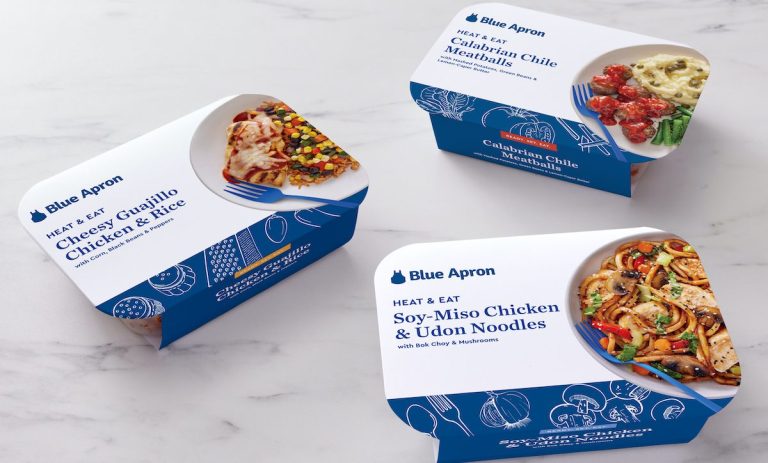
Blue Apron and DoorDash’s DashMart have expanded their partnership to 11 new markets.
The expansion makes Blue Apron’s Heat & Eat meals available in a number of new locales, including New York City. It follows a pilot program launched by the companies last year in Philadelphia, John Adler, Blue Apron’s senior vice president of physical product, said in a Wednesday (April 5) press release.
“These types of strategic partnerships are an important market opportunity for us to expand our reach and provide customers with access to our products without a subscription,” Adler said in the release.
The company’s Heat & Eat meals are based on popular Blue Apron dishes, but able to be prepared in five minutes and designed for single-serving. The program is also available in cities in Illinois, Maryland, New Jersey, Ohio, Pennsylvania and Virginia.
As PYMNTS reported last month, Blue Apron has been focusing on customer acquisition to improve its shaky financial position, in part through partnerships with companies like DoorDash, Amazon and Walmart.
“Our focus on profitability is expected to put pressure on our top line revenue and customer numbers in 2023,” CEO Linda Findley said during an earnings call in March.
“This is not to say that we are deprioritizing revenue and customer growth, but rather focusing our business objectives to support our path to profitability in the near term.”
In fact, the number of customers dropped 11% year over year and 8% relative to the prior quarter, which the company says is down to both to a decrease in marketing spending and to consumers spending less due to inflation.
It’s worth noting that as Blue Apron’s customer base diminished during the course of 2022, the share of consumers overall who were purchasing meal kits actually rose, according to PYMNTS data from the study “ 12 Months Of The ConnectedEconomy™: 33,000 Consumers On Digital’s Role In Their Everyday Lives.”
That report found that the number of consumers who said they made purchases from online subscription services that deliver meal kits rose from 25% in December 2021 to 31% in November 2022.
Meanwhile, additional PYMNTS research shows a desire among consumers for quick and convenient meals, especially from higher-income shoppers.
PYMNTS’ study “Digital Economy Payments: Consumers Buy Into Food Bargains” shows that 37% of consumers had bought prepared food on their most recent trip to the supermarket, and that share was on the rise.
The report also found that 43% of consumers with yearly incomes above $100,000 had purchased prepared meals in their most recent grocery purchase, something that was true for just 36% of middle-income consumers and 31% of those with incomes below $50,000.